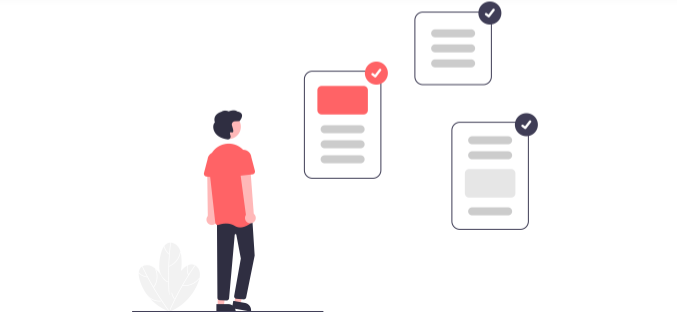Guest post originally published on Logiq’s blog by Ajit Chelat
Cloud computing is everywhere. An ever-increasing number of businesses have turned to the cloud for their storage, compute, analytics, content management and business operations demands. With its ever-increasing adoption, cloud computing is quickly turning into the lifeline for infrastructure, platform, and software setups for organizations of all sizes. The compelling and affordable pricing of cloud computing technology has made it a no-brainer for companies to adopt and build their operations and offerings around the cloud.
From our partners:
The cloud is pretty comprehensive – through the cloud, you get access to a wide variety of online services through various delivery models. You’ll often find cloud service offerings using the -aaS (as-a-Service) acronym – right from the popular SaaS, PaaS, and IaaS models to XaaS or Anything-as-a-Service. In today’s world, vendors can deliver practically any service via the cloud.
For someone looking to employ cloud services in their business, it’s crucial to understand the difference between these models and identify what’s right for you.
In this article, we look at the key differences between the most popular cloud technology delivery models: Software-as-a-Service (SaaS), Platform-as-a-Service (PaaS), and (Infrastructure-as-a-Service).
What is SaaS?
As the name suggests, SaaS is a cloud service where users can access various applications hosted on the cloud by a service provider. Users can access these applications over the internet without downloading or installing these services on their devices. Users also don’t have to manage the hardware and performance requirements of the service itself as the service provider takes care of all of these needs.
Key features:
- No need to download, install, or upgrade software.
- Can access services via a monthly or annual subscription
- No need to front the costs of developing and maintaining these services
- No need to manage hardware requirements
- Can be accessed anywhere
Advantages:
- Highly scalable and highly available
- Huge savings on costs
- Easy to configure at the cost of limited customization
- Frees up infrastructure and development resources
- Compatible across devices
- Promotes collaboration
Disadvantages:
- Users have limited control over the service
- You may not have offline access to the service
- TCO (Total-cost-owned) is generally higher
What is PaaS?
PaaS is a framework for software development delivered over the internet. Providers generally give access to a platform with built-in software components and tools that developers can use to create, customize, test, and launch their applications. PaaS vendors manage servers, OS updates, security patches, and backups so that users focus on building their apps and maintaining and owning their own data without worrying about infrastructure, middleware, or OS maintenance.
Key features:
- Allows for developing, testing, and hosting apps in the same environment
- You can scale resources up or down depending on business needs
- Multiple users can access the same app in development
- The user doesn’t have complete control over the infrastructure
- Web services and databases are integrated
- Remote teams can collaborate easily
Advantages:
- PaaS-built software is highly scalable, available, and multitenant
- The development process is quickened and simplified
- Reduced expenses for creating, testing, and launching apps
- Reduced amount of coding required
- Allows for easy migrating to the hybrid cloud
Disadvantages:
- Users might have to worry about data security
- Compatibility with existing infrastructure
- Increased dependency on vendor’s speed, reliability, and support.
What is IaaS?
IaaS is the cloud equivalent of your traditional data centers. With IaaS, users can access scalable compute resources such as servers, networks, and storage that IaaS vendors provide through virtualization technology. IaaS helps saving costs since users no longer have to buy hardware and manage its components and resources. Users also have total control over the infrastructure and are free to install and maintain apps and OS. Users also have control over security, middleware, and data managed by the infrastructure.
Key features:
- Highly scalable resources at marginal costs
- Access to enterprise-grade infrastructure without having to set it up yourself
- Pay-as-you-use
- A single piece of hardware can serve multiple users
- Users get complete control over the infrastructure
Advantages:
- Highly flexible and dynamic
- Cost-effective as you only pay for what you use
- Easy to use due to automated deployment of hardware
- Management tasks are virtualized, thereby freeing up your workforce to work on other tasks
Disadvantages:
- Multitenancy can lead to data security issues
- Vendor outages can make user’s systems inaccessible
What’s right for you?
As you can see, SaaS, PaaS, and IaaS differ in more than one way, with each delivery model having its own set of advantages and disadvantages. Each model or even a combination of the three can be helpful for your business. But before turning to a cloud service, it’s essential to establish your business’ goal and desired outcome from turning to the cloud. Here are the baselines to help you decide:
- If you’re looking for a plug-and-play service like email, cross-team collaboration, or a CRM, go for SaaS.
- If you’re looking for a platform for your developers to build and deploy products on without going through the hassle of building and maintaining the platform itself, go for PaaS.
- If you’re looking for a data center or compute resources without having to shell out a fortune, go for IaaS.
For enquiries, product placements, sponsorships, and collaborations, connect with us at [email protected]. We'd love to hear from you!
Our humans need coffee too! Your support is highly appreciated, thank you!




